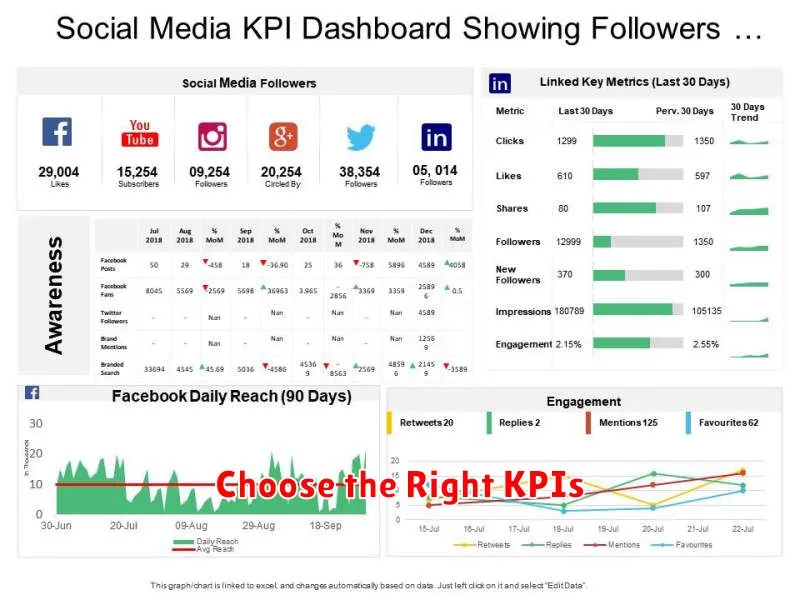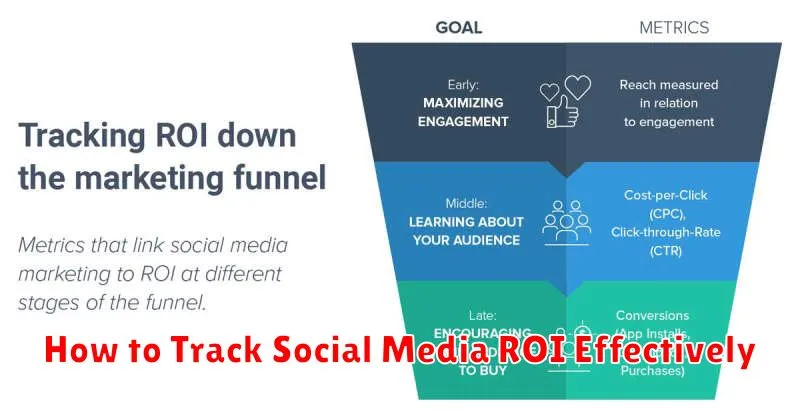In today’s digital landscape, understanding and measuring the return on investment (ROI) of your social media efforts is crucial. No longer simply a platform for brand awareness, social media has become a powerful engine for driving business objectives. This article will equip you with the knowledge and tools necessary to effectively track social media ROI and demonstrate the value of your social media marketing campaigns. We’ll cover key metrics, practical tracking techniques, and how to align your social media strategy with overarching business goals to ensure a positive and measurable impact. Whether you’re looking to improve lead generation, boost sales conversions, or enhance customer engagement, mastering social media ROI tracking is essential for achieving success.
Tracking social media ROI can be challenging, but it’s an essential process for any organization investing in social media marketing. This comprehensive guide will delve into various approaches for measuring the effectiveness of your social media activities. Learn how to identify key performance indicators (KPIs) relevant to your specific business objectives and how to use data-driven insights to optimize your social media strategies. From calculating the monetary value of your social media efforts to demonstrating the impact on brand reputation and customer loyalty, this article will empower you to confidently assess and communicate the true ROI of your social media investments.
Define Clear Social Media Goals
Before diving into metrics and analytics, clearly define your social media objectives. What do you hope to achieve through your social media presence? These goals should be Specific, Measurable, Achievable, Relevant, and Time-bound (SMART).
Examples of SMART social media goals include:
- Increase brand awareness: Grow follower count by 15% in the next quarter.
- Drive website traffic: Generate 500 website visits from social media platforms in the next month.
- Generate leads: Acquire 100 qualified leads through social media campaigns in the next two months.
- Improve customer service: Respond to all customer inquiries within 24 hours on social media platforms.
By establishing precise goals, you can effectively measure your progress and determine the success of your social media efforts. These goals will inform the metrics you track and provide a framework for evaluating your ROI.
Choose the Right KPIs

Selecting the right Key Performance Indicators (KPIs) is crucial for accurately measuring your social media Return on Investment (ROI). Choosing KPIs aligned with your business objectives is the first step. Ask yourself, what are you trying to achieve with your social media presence? Is it brand awareness, lead generation, or driving sales?
Different objectives require different KPIs. For brand awareness, track metrics like reach, impressions, and share of voice. If your goal is lead generation, focus on website clicks, lead form submissions, and webinar registrations. For sales-driven objectives, monitor conversion rates, online sales, and customer lifetime value influenced by social media.
Don’t track every metric available. Focus on a few key KPIs that directly reflect your campaign goals and provide actionable insights. This focused approach allows for more effective analysis and optimization of your social media strategy.
Use UTM Parameters for Links
UTM parameters are essential for accurately tracking your social media marketing efforts. These short text codes are appended to your URLs, allowing analytics platforms like Google Analytics to identify the source of your traffic.
By using UTM parameters, you gain granular insights into which social media platforms, campaigns, and even specific posts are driving the most valuable traffic to your website. This data is crucial for understanding what’s working and what’s not, enabling you to optimize your strategy and improve your ROI.
Key UTM Parameters:
- utm_source: Identifies the platform (e.g., facebook, instagram, twitter).
- utm_medium: Specifies the marketing medium (e.g., social, cpc, email).
- utm_campaign: Indicates the specific campaign name (e.g., spring_sale, product_launch).
- utm_content: (Optional) Differentiates between variations of the same ad or post (e.g., ad_a, ad_b).
- utm_term: (Optional) Used for paid campaigns to track keywords.
A properly structured URL with UTM parameters might look like this: example.com/product-page?utm_source=facebook&utm_medium=social&utm_campaign=summer_sale
Track Conversions from Campaigns
Tracking conversions is crucial for understanding your social media ROI. A conversion is a completed action that aligns with your campaign goals. This could be a purchase, a sign-up, a download, or any other desired outcome.
Use UTM parameters in your campaign links. These small pieces of code allow you to identify which social media platform and even which specific post drove the conversion. Most social media advertising platforms have built-in UTM parameter builders.
Connect your analytics platform to your website or app. Platforms like Google Analytics can track website traffic and attribute conversions back to the original source, including your social media campaigns.
Regularly monitor your conversion data to understand which campaigns are performing well and which need adjustments. This allows for data-driven optimization, ensuring your social media budget is being used effectively.
Leverage Google Analytics Integration
Integrating your social media platforms with Google Analytics is crucial for effectively tracking ROI. This integration provides a holistic view of how social media contributes to your website traffic and conversions.
By configuring UTM parameters (Urchin Tracking Module) for your social media links, you can accurately attribute website activity to specific campaigns, posts, or even individual social media platforms. This granular data enables you to understand which channels are driving the most valuable traffic and contributing to your business goals.
Within Google Analytics, navigate to the ‘Acquisition’ section to analyze social media traffic. Here you can assess metrics such as:
- Sessions: The number of visits initiated from social media.
- Conversion Rate: The percentage of social media visitors who complete a desired action (e.g., purchase, signup).
- Bounce Rate: The percentage of visitors who leave your site after viewing only one page.
Analyzing this data allows you to optimize your social media strategy by identifying high-performing platforms and content, ultimately maximizing your return on investment.
Compare Organic vs Paid Performance
Analyzing both organic and paid social media performance is crucial for understanding overall ROI. Organic reach refers to the audience you gain naturally through compelling content and engagement. Paid reach, on the other hand, comes from sponsored posts and advertisements, allowing you to target specific demographics.
Comparing these two provides insights into what resonates with your audience organically and how effectively your paid campaigns are performing. Look for areas where paid efforts are amplifying organic success, or where organic content can inform paid strategies. This comparison can help you optimize both approaches and maximize your overall social media ROI.
| Metric | Organic | Paid |
|---|---|---|
| Reach | Limited by algorithm | Wider, targeted reach |
| Engagement | Potentially higher, genuine interest | Can be boosted, but less authentic |
| Cost | Free | Budget-dependent |
Report Results to Stakeholders
Effectively communicating your social media ROI to stakeholders is crucial. A clear and concise report demonstrates the value of your efforts and justifies continued investment.
Begin by defining your key performance indicators (KPIs). These should align with your overall business objectives. Examples include website traffic, lead generation, conversion rates, and brand awareness.
Present your data in a visually appealing and easy-to-understand format. Tables and charts can effectively illustrate trends and progress. Focus on highlighting the impact of your social media activities on the bottom line.
Clearly explain the connection between your social media strategy and the achieved results. Did a particular campaign drive a significant increase in sales? Did a specific content type generate more leads? Providing this context helps stakeholders understand the value of your work.
Finally, offer actionable recommendations based on your findings. Should the budget be adjusted? Are there opportunities to optimize the strategy for even better results? These insights demonstrate your proactive approach and commitment to continuous improvement.

